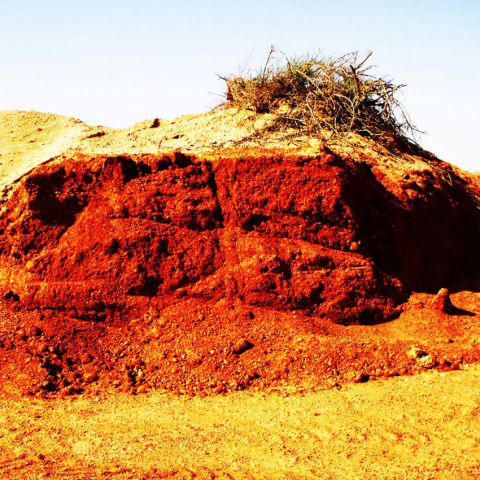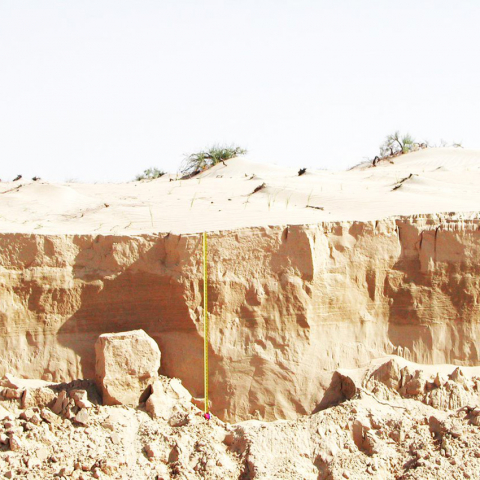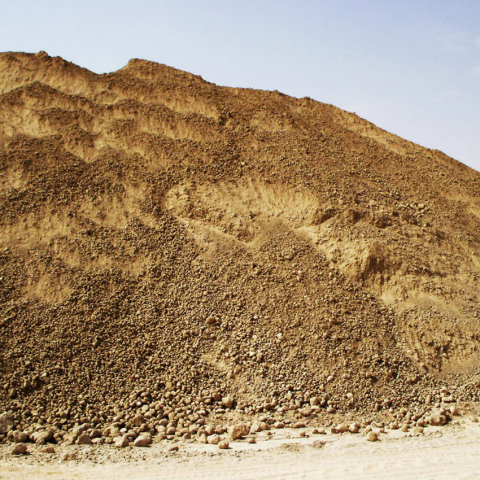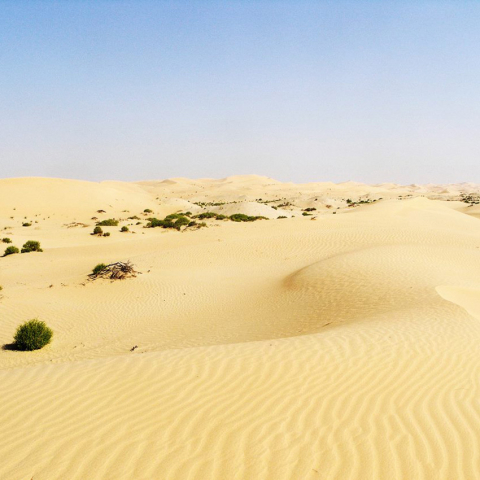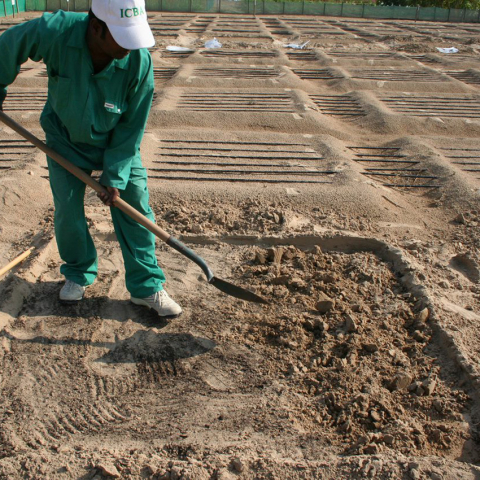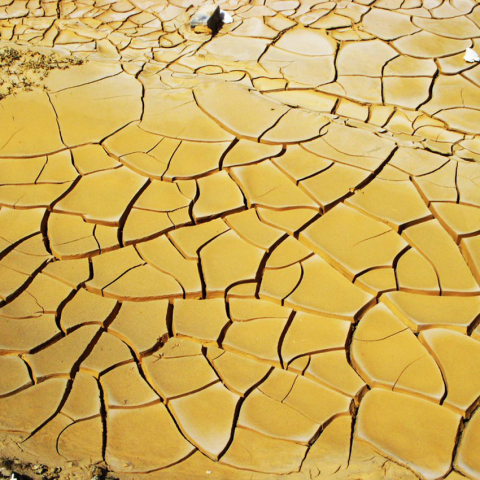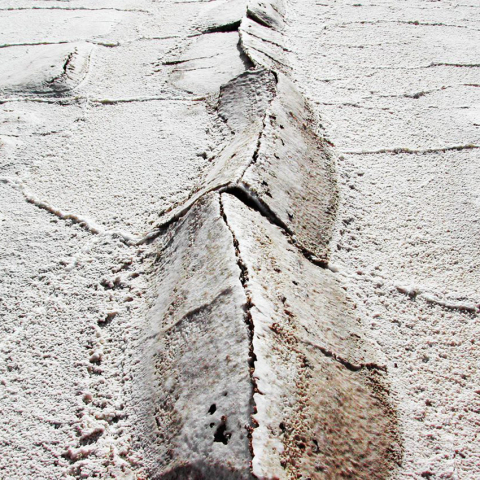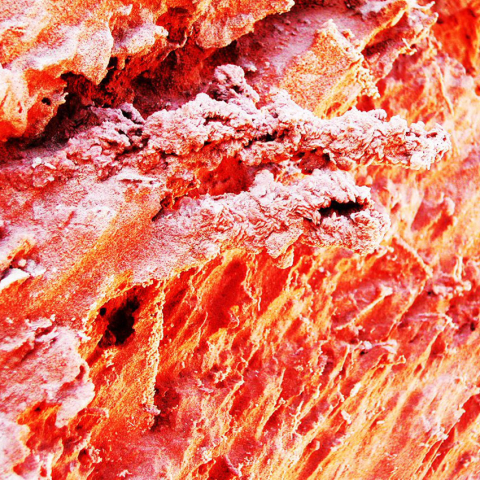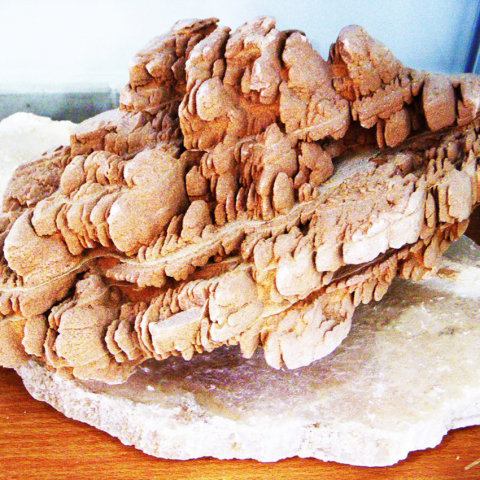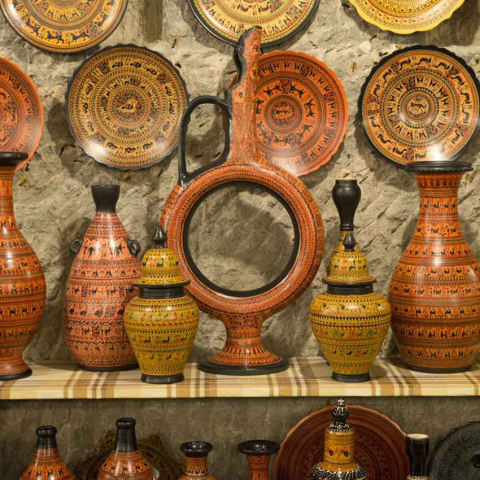Deserts of the United Arab Emirates are decorated with diversified colors of sand of various composition, iron rich (red), calcium carbonates rich (white), gabro (greenish grey). Scientifically soil color can be measured by determining three parameters, Hue (a measure of the chromatic composition of light that reaches the eye); Value - indicates the degree of lightness or darkness of a color in relation to a neutral grey color; Chroma - relative purity or strength of the spectra color. Once soil color is reported using Munsell color system, globally everybody understands about the type of soil and can also trace soil formation history.
Soil texture depends on the percent distribution of three groups of soil particles based on their sizes: sand (2000-50 μm), silt (50-2 μm) and clay (< 2 μm). Soil texture can be determined using a textural triangle presenting 12 classes. Sandy soils have high infiltration but poor nutrient retention, thus require frequent water and fertilizer application. Silty soils have moderate infiltration and nutrient retention. High silt can clog the soil. Clay soils have low infiltration but high nutrient retention. Equal distribution of sand, silt and clay is called loamy soil.
Human body is made up of different parts like organs and bones, the soil has its own body "soil structure" composed of little clumps known as "aggregates" and pores (space between soil particles). Soil particles stuck to each other using organic matter as glue to bind them together into different sizes and shapes like, granular (rounded), blocky (angular and subangular), prismatic, columnar, massive, and loose sand (structureless). A good, structured soil is essential for agriculture activities.
Native sandy soil is low in fertility, such as it has low clay and organic matter contents. It is also not leveled. It does not have the capacity to hold water and nutrients and thus considered low quality soil for crop production. These soils are irrigated and fertilized frequently to offset water and nutrient requirement of crops and thus production become uneconomical.
Native sandy soils require their health to be improved for crop production. Soil health can be improved by using organic (compost, biochar, biofertilizers) and inorganic (Zeoplant, Austrablend Multi Mineral Soil Conditioner, Zeolite, Bentonite etc.) amendments, whereas nutrient status (nitrogen, phosphorous, potassium) can be improved by using chemical fertilizers like Urea, Diammonium phosphates, potassium sulfates etc.
Global warming is a term for the observed century-scale rise in the average temperature of the Earth's climate system and its related effects. Global warming has many effects but most important is that world’s lands once most productive will be converted to drylands and will not be capable of producing crops. Currently drylands occupy 41% of the earth’s terrestrial surface and are home to more than a third of the world’s population.
The coasts of the United Arab Emirates are rich in salt-resources which can be exploited for commercial purpose. One of these salts is Sodium Chloride (NaCl) called halite. Halite has many uses like it can be used as table salt in foods, to make caustic soda, deicing roads when roads are full of snow like Europe.
The other important salt is anhydrite (CaSO4) which can be used to produce sulfuric acid, reclamation of sodium affected soils and making plasters for dressing patients in hospitals.
Gypsum (CaSO4.2H2O) is another mineral which has many uses, like it is commonly used as construction material, setting cement, and to amend sodium affected soils.
Gypsum (CaSO4.2H2O) occurs in many shapes in the deserts of the United Arab Emirates. It has commonly been found as lenses, euhedral crystals and desert roses. Desert rose is rosette of gypsum crystals with sand inclusions. These are formed when water rich in calcium and sulfate evaporates under arid sandy conditions like in the salt-scalds “called sabkha” in the UAE. Sand grains are trapped in the gypsum crystals during their growth and give them the same color as the sand.
Soils are formed from the parent material consisting of various minerals. The composition of soils mainly depends on minerals these soils are formed. These minerals based on their composition can be grouped into various categories, like silicates, alumino-silicates, carbonates, sulfates etc..
Fossils are evidence of ancient life forms or ancient habitats which have been preserved by natural processes. In the United Arab Emirates deserts, we come across with several fossilized eggs and footprint of seashells. The fossilized eggs are mostly rounded and broken on the outside and carved due to climatic effects. However, the types of fossilized eggs are still to be determined.
As an art of building objects from soil, Pottery is considered as fundament of civilization, creating the means for long-term storage of food and materials and their protection. The first kind of pottery discovered was earthenware, dating back some 9,000 years. Earthenware pottery is extremely durable and remains in wide use today. Thus, pottery has strong link to civilization.

